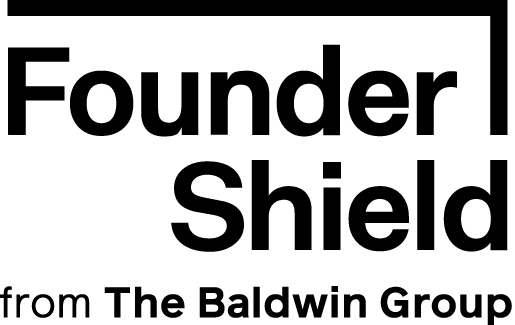Key Takeaways
It’s safe to say that virtually every industry is investing in AI these days. The technology has proven to give companies a competitive edge, enhancing operational efficiency, and creating new revenue streams. However, as with any disruptive technology, it also introduces new risks and challenges that must be managed.
The speed at which AI is evolving is outpacing regulations, and insurance has become an ally for AI companies navigating the murky legal framework.
Understanding Generative AI
Generative artificial intelligence (AI) is a type of AI that uses generative models to learn from the information it’s been fed to create a new set of data that can take the form of images, text, video, or other data, usually in response to prompts. ChatGPT is the most recognized application, but since its inception in late 2022, multiple AI generative models have gained popularity and evolved in their capabilities.
More and more players are entering the generative AI space daily to serve the growing demand for the technology across industries.
Legal Landscape of Generative AI
As generative AI technologies evolve, governing their use continues to be increasingly complex for companies to navigate. Understanding the current frameworks, challenges and potential future developments is crucial for any generative AI business aiming to innovate responsibly.
Currently, the legal frameworks and regulations governing AI’s use are a patchwork of existing intellectual property laws, data protection regulations and guidelines. For example, the General Data Protection Regulation (GDPR) in the European Union imposes certain obligations on AI companies regarding data privacy and the processing of personal information.
Similarly, in the US, the Federal Trade Commission (FTC) has issued guidance around fairness, transparency and accountability for AI use. However, there’s still ambiguity about its responsible implementation, leaving room for interpretation — and risk.
Liability is also being questioned. Who is responsible when AI-generated content causes harm? Is it the AI developer, the user or both? Establishing clear liability frameworks is crucial for insurance purposes. Yet, current legal frameworks do not adequately address this challenge.
The European Union is currently working on finalizing what might be the world’s first-ever comprehensive legal framework on Artificial Intelligence — the European Union Artificial Intelligence Act (the “EU AI Act”). The act will either prohibit the deployment of AI systems that pose “unacceptable risks” or impose regulatory requirements on those deemed “high risk” or “limited risk.”
We can only expect that the legal landscape will shift significantly in other jurisdictions as policymakers, regulators and stakeholders grapple with the challenges and opportunities presented by AI technologies.
Unique Risks Generative AI Companies Face
Generative AI companies face unique challenges, including legal disputes and ethical considerations.
IRL Legal Example #1
Most recently, the music industry has been vocal about intellectual property issues stemming from AI-generated content. Industry giants have sued AI company Anthropic for distributing lyrics with its AI model Claude 2, which Universal Music Group and other music publishers argue violates copyrighted material. They state that the platform generates lyrics that are highly similar to existing music owned by the company.
IRL Legal Example #2
The art industry is in a similar intellectual property battle with Stability AI for its image generator, Stable Diffusion. In a recent lawsuit against the company, three artists accused the AI company of copyright infringement. The defendants argued that the software training process with the artists’ images was protected by fair use. The judge in the landmark case dismissed most of the claims brought forward by the plaintiffs, setting a precedent for future arguments.
Data privacy and security challenges specific to generative AI technologies are also concerning. The large datasets used to train AI models are attractive targets for cybercriminals. A data breach compromising user information could result in serious consequences, including legal liabilities for failing to protect sensitive data.
IRL Legal Example #3
Lastly, the automotive industry serves as the perfect example of possible cases of liability for harm caused by AI outputs. In collisions, victims can seek compensation if they can prove that the harm caused was a foreseeable consequence of the accused’s conduct. However, this wouldn’t be the case for self-driving vehicles. Many already run on AI systems that involve multiple parties in their deployment and execution, making it complex to prove who is at fault under existing legal terms.
How Insurance Benefits AI Companies
Regulators are having a hard time keeping up with the rampant pace of AI advancements. Insurance has become an ally for AI companies navigating these uncertain times, actively becoming specialists in the matter to mitigate risks AI companies could face. Insurers can offer protection, resilience, and peace of mind amid legal challenges and regulatory shifts.
Whether it’s copyright infringement claims, data privacy breaches or allegations of algorithmic bias, insurance offers a safety net, allowing AI companies to focus on innovation without the cloud of damaging legal costs hanging overhead.
Think of insurance as a shield safeguarding against regulatory risks and liabilities. The goal is to empower AI companies to focus on creative growth as their coverage mitigates potential disruptions to operations and revenue streams.
Comprehensive coverage is a sign a company is prepared for the good, the bad, and the ugly. It communicates to stakeholders that you understand the risks in an industry that is vulnerable in the legal landscape. This transparency and accountability fosters trust among investors and customers, positioning AI companies with strategic coverage as reliable partners in innovation and progress.
The Best Insurance Policies for Generative AI Companies
Much is being said about how AI influences the insurance landscape, but little has been discussed about dedicated insurance for generative AI companies. These startups are growing at lightspeed, and knowing the risks they face in today’s evolving landscape makes insurance an even more pressing matter.
Intellectual Property Insurance
Description: IP insurance covers companies when their intangible assets (trademarks, logos, texts, patents and trade secrets) have been infringed upon or vice versa. Generative AI companies need to train their algorithms with a flurry of data, often originating from protected sources. However, it’s still a foggy subject — as the World Intellectual Property Organization has put it, “Debates are ongoing about the balance of interests between IP owners and AI developers.”
Coverage: IP insurance provides financial coverage for defense costs upon claims of infringement, funding litigations in case your company’s assets are infringed on, and patent coverage.
What IP claims look like: A generative AI company specializing in creating unique music compositions through AI algorithms, found itself in the crosshairs of a lawsuit filed by a renowned music publisher. The publisher alleged that the AI had generated songs that closely mirrored the copyrighted melodies of several artists in its catalog, without permission or licensing.
Facing potential damages running into millions and a tarnished reputation, the company relied on its intellectual property insurance. This coverage stepped in to handle legal defense costs, facilitating a settlement that avoided a prolonged court battle, thereby safeguarding the company’s financial stability, and allowing it to continue its innovative work within legal boundaries.
Errors & Omissions Insurance
Description: E&O insurance, also known as professional liability, protects against third-party lawsuits that involve financial losses. These can stem from product malfunction or subpar performance, or an individual’s error and oversight.
Coverage: E&O covers defense costs when claims are made against your company, loss of earnings due to lengthy legal processes, cases of disciplinary proceedings, and employee errors. In certain cases, it will also provide financial support when reaching settlements and costs associated with personal injury claims.
What E&O claims look like: A generative AI firm, known for its cutting-edge financial forecasting software, faced a substantial claim when a major investment firm alleged that flawed predictions provided by the AI led to significant investment losses. The inaccuracies were traced back to an overlooked error in the AI’s data processing algorithms.
This oversight prompted the investment firm to sue for negligence, seeking compensation for its financial downturn. The generative AI company’s errors & omissions Insurance was crucial in covering the legal defense costs and the substantial settlement amount, thereby preventing the company from financial ruin and allowing it to rectify the software issues without depleting its resources.
Cyber Liability Insurance
Description: Cyber Liability is at the core of any tech company. This insurance covers a company in the aftermath of cyber attacks where digital assets have been compromised, such as ransomware, phishing, DDoS, data breach, and the list goes on.
Coverage: Cyber insurance covers loss or damage to company or third-party data, loss of income or extra expenses resulting from or trying to avoid downtime, extortion losses in case of ransomware attacks or similar attacks, the costs associated with notifying affected parties, potential legal expenses, and marketing/public relations, among other things.
What Cyber Liability claims look like: A generative AI startup specializing in personalized healthcare plans experienced a severe data breach when hackers infiltrated its system, gaining access to the personal and medical data of thousands of users. This breach not only compromised user privacy but also exposed the company to potential regulatory penalties and class-action lawsuits from affected individuals.
The startup’s cyber liability insurance proved invaluable, covering the immediate costs of the breach response, including legal fees, notification expenses, credit monitoring services for affected users, and settlements from the lawsuits. This coverage allowed the company to manage the crisis effectively, maintain user trust, and avoid catastrophic financial impacts.
Product Liability Insurance
Description: Product liability insurance covers companies in case their product causes bodily injury or property damage. As more and more companies leverage generative AI to design their products, product liability will take center stage to cover accidents stemming from the technology.
Coverage: Product liability covers manufacturing and design defects and inadequate labeling in consumer goods.
What Product Liability claims look like: A company leveraging generative AI to produce autonomous drones for agricultural monitoring faced a lawsuit after one of its drones malfunctioned, crashing into a barn and causing extensive property damage and loss of livestock. The malfunction was attributed to a drone’s AI navigation system flaw.
The aggrieved farmer filed a claim for the damages incurred. The AI company’s product liability insurance was crucial in this situation, covering the legal defense costs and compensating the farmer for the property damage and loss of livestock, thereby protecting the company’s financial assets and reputation while they worked on improving their technology.
Directors & Officers Insurance
Description: D&O insurance financially supports company executives and leaders in case of lawsuits against them. In an industry with fierce competition, such as AI, these claims are nothing new, aiming to tarnish a company’s progress and reputation on its way up.
Coverage: D&O coverage is multi-faceted, as a company might choose not to cover its leaders’ legal expenses for several reasons. Side A covers individuals if companies aren’t financially capable of covering their legal fees or the claim goes against the company by-laws. Side B helps the company recover costs from indemnifying individuals named in the lawsuit. Finally, side C provides a balance sheet protection for the company and the individual named in a lawsuit.
What D&O claims look like: The executives of a generative AI company specializing in educational content faced a lawsuit from investors alleging misrepresentation of the company’s financial health and the potential of its AI technology. Investors claimed that overly optimistic projections led to significant financial losses.
This scenario triggered a directors & officers (D&O) insurance claim, providing coverage for legal defenses and any settlements. The insurance played a critical role in safeguarding the personal assets of the company’s leadership and covered the substantial legal costs associated with defending against the allegations, allowing the company to continue its operations while addressing the concerns raised by its investors.
Types of Generative AI companies That Need Insurance
The breakneck pace of generative AI development brings exciting possibilities but also introduces new risks. As these companies push the boundaries of what’s possible, here’s why various types of generative AI businesses need to consider having the right insurance in place:
- Generative AI Development Companies: These companies build and design generative AI models and tools. They’ll need insurance to cover potential issues like model bias, privacy breaches, or faulty outputs causing harm.
- Generative AI Integration Services: These companies help integrate generative AI models into existing systems. They might need insurance for malfunctions or compatibility problems arising from the integration.
- Generative Content Creation Companies: These companies use generative AI to produce creative content like text, images, or music. They’ll need insurance for copyright infringement or unintentionally generating harmful content.
- Generative AI for Specific Industries: Companies applying generative AI in specific sectors like healthcare, finance, or engineering might need specialized insurance. This could cover risks related to faulty AI-generated diagnoses, financial losses due to inaccurate predictions, or product liability issues.
Beyond Traditional Insurance: Custom Solutions for Generative AI Risks
The rapid development of generative AI presents exciting possibilities and unique risks that traditional insurance policies might not adequately address. Let’s delve into the need for tailored insurance solutions and explore examples of customized packages designed to protect your generative AI business from these emerging risks.
The Limitations of Traditional Coverage
The limitations of traditional coverage become evident when considering gaps in areas like IP infringement, liability for AI outputs, algorithmic bias, and the lack of specialization among insurers for these emerging risks.
One-size-fits-all approach: Standard business insurance policies are often designed for more established industries and might not consider the complexities of emerging generative AI models and data practices.
Gaps in coverage: Traditional policies might not cover specific areas concerning generative AI, like the examples below.
- Intellectual Property (IP) infringement: Lawsuits concerning the use of copyrighted data to train AI models.
- Errors & Omissions for AI outputs: Liability arising from biased or inaccurate outputs generated by AI models.
- Algorithmic bias: Damages caused by discriminatory decision-making embedded within AI algorithms.
- Lack of specialization: Traditional insurers might lack the expertise to understand and assess the evolving risks associated with generative AI.
The Rise of Custom Solutions
To bridge these gaps, the insurance industry is developing specialized solutions tailored to the needs of generative AI companies. Let’s examine one of the most popular customized endorsements.
- IP Infringement coverage: This policy would provide financial protection in case of lawsuits alleging copyright or trademark infringement related to training data or the outputs of AI models. Its coverage would include legal defense costs, settlements, and potential damages awarded. Additionally, the policy might enclose services to help companies ensure they have proper licenses for the data they use.
Benefits of Customized Solutions
Sitting down with your insurance broker should yield outcomes that leave you feeling at ease amid high growth prospects, ultra-innovative technology, and the occasional ruthless competitor.
Tailored insurance allows generative AI companies to focus on expanding their vision, knowing they’re protected against potential liabilities. Additionally, robust insurance can make companies more attractive to investors, easing access to capital for further development.
Finally, something that isn’t talked about enough is encouraging responsible AI development. Insurance companies might incentivize best practices like data security and algorithmic fairness through risk assessment and premium adjustments, fostering sustainable and fair use of AI innovations.
Best Practices in Risk Management for Generative AI Companies
No one should ever be too careful, especially in the generative AI space, which is full of new use cases and daily advancements.
Founders must ensure their data is safe and easily accessible at all times. Companies must inventory data and understand its source and licensing, implement robust data security measures like access controls and encryption and comply with relevant data privacy regulations depending on location (GDPR, CCPA etc.).
Companies in such an evolving environment should also prioritize promoting a culture of risk awareness. This means properly training staff on risk identification, mitigation, and responsible AI development. In this case, it’s always helpful to consult with risk management professionals specializing in generative AI for tailored advice to fully understand company risks and how to mitigate them.
And, upon having risk mitigation strategies, team leaders must periodically review and adjust them as the company and the AI landscape evolve. Doing so entails continuously monitoring the evolving legal scope surrounding generative AI and adapting risk management strategies as regulations and best practices change.
Preparing for the Insurance Purchase Process
Acquiring insurance requires more than sitting down with providers and talking numbers. In fact, there’s a preliminary process every company should go through to assess their risk profile and polish their practices as much as possible to get favorable coverage (and premiums!).
Startups must follow a risk management process, which can be summarized in five helpful steps:
- Risk identification: Map out every possible vulnerability your company might face, from product malfunctions to cyber threats and employee liability. Explore what’s happening in your industry, talk to colleagues and engage risk management experts to identify your weak spots.
- Risk analysis: Assess the damage they could cause your startup. Risk management software could come in handy here, allowing you to foresee the impacts of certain risks.
- Risk evaluation: Create a tier list of sorts to categorize the severity of a risk and whether it’s worth protecting against. If its potential impact is too profound to devise the damages to your startup, it’s worth prioritizing.
- Risk tracking: Young companies that haven’t run into issues they can capitalize on might have a hard time tracking risks. So, engage with experts and industry veterans to keep new risks at bay and avoid making the mistakes other larger companies have made.
- Risk treatment: Prevent your company from suffering these risks. Would you have to cut a service? Do you need to build a safety net around it? Your approach to a risk management plan may differ depending on the risk’s severity. Insurance is one of those protective cushions that can help you mitigate those risks.
The Future of Insurance for Generative AI: Fueling Its Growth
Insurance has the power to sustain industries in tough times and become a safety net as they expand and succeed. It will be no different for generative AI, where insurance will be crucial to help it sail smoothly through incoming regulations and technological breakthroughs.
Knowing they’re protected from potential pitfalls, companies might be more willing to experiment with cutting-edge AI models and applications. Insurance also gives potential partners peace of mind when collaborating with generative AI companies on innovative projects and helps startups navigate legal challenges more effectively, reducing the risk of crippling lawsuits that could stifle innovation.
The future of insurance for generative AI is about building a symbiotic relationship. As the industry continues pushing boundaries, the insurance industry must adapt and offer innovative solutions too. This collaborative approach will foster a secure environment where generative AI can flourish, driving advancements across various sectors, and revolutionizing the world around us.
At Founder Shield, we’ve supported several emerging industries as they navigate the tech world’s ups and downs, and our experts know what generative AI companies need the most. Request a customized insurance quote for your AI business; it only takes a few minutes to submit your information and start shopping for better coverage and pricing.











